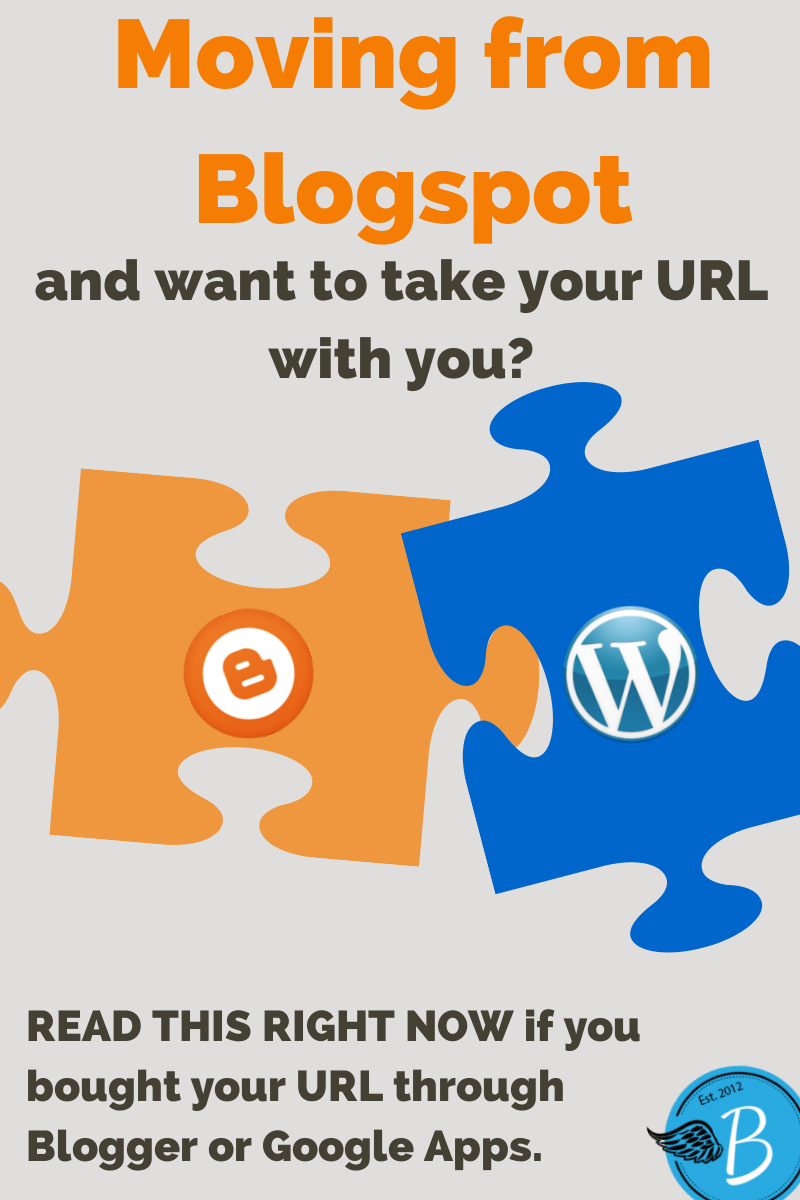 Please excuse this public service announcement if you are a WordPress user, but I have spent the last two hours tracking down how to deal with a custom domain on a Blogger blog when you are in the process of migrating to WordPress. Here’s how the story goes:
Please excuse this public service announcement if you are a WordPress user, but I have spent the last two hours tracking down how to deal with a custom domain on a Blogger blog when you are in the process of migrating to WordPress. Here’s how the story goes:
Once upon a time, you started a blog. You opened an account with Blogger (aka Blogspot) and went on your merry way. After a year or so, you realized, “Hey I’m good at this gig, I think I should be all professional now!”
If you happened to have this experience a few years ago, this is what happened. You went into your dashboard, clicked on the option for a custom URL (aka vanity URL) and proceeded to jump through all these portals until magically, your address was changed. Now you were no longer…
mycoolblog.blogspot.com
You were,
Mycoolblog.com
Awesomesauce.
A few years go by and now you’re the big time. It’s time to move that bad boy over to WordPress and be your awesome self. You web designer asks if you want to keep your domain name and you’re all like, “Well hell to the yes.”
And then she asks what company owns your domain name, and you’re like,
….
Radio Silence.
…
Not to blame you at all, Google didn’t exactly advertise the company all that well. It probably appears in your Google Wallet (which is hard enough to find as it is) as this tiny word after your domain registration.
Turns out, you’re registered with eNom.
I know. No one even knows what it is. It’s a nameless, faceless, phone company that sells domains for Blogger blogs. (You may have your domain name through a more reputable company like GoDaddy, but lest you think you are a real customer- you are not and should keep reading anyway).
No worries. You’re almost there. Now how exactly to get into the DNS console so you can move that domain name to your sparkly new site?
You go to eNom, and realize — the phone number doesn’t get you a person, and the login credentials get you nowhere.
Damn.
Next step. You go back to your Google wallet and realize that the domain was purchased through Google Apps. A collective “OHHHHHH!” is heard in the blogosphere. All you have to do is log into the Google Apps account and then you can access all the details of your domain name.
You login and BOOM.
It fails. You try again. You even change your password, because maybe you can’t remember it correctly.
Nothing. Your web designer thinks you must not be very smart for forgetting all these important passwords.
The Solution after Hours of Scouring the Google Forums for Answers
Many bloggers who buy their domain names through Blogger don’t actually go into Google Apps and customize their email addresses and accounts. Instead, the minute that custom domain is up there, they forget about it entirely (until you get the creepy out of nowhere Google wallet invoice).
The problem is you need a custom email to log in to Google Apps!!! It’s separate from your regular google account. So if you don’t do this, you and your designer will be perplexed.
As it turns out, when you sign up for a custom domain through Google Apps, you automatically get a default email address that is the following:
bloggeradmin@yourcustomdomain.com
THAT my friends, is your username. Maybe it was in your welcome packet, but we all know what happens to those in the bowels of email file systems. Might as well be rolled into a joint.
Now, even God himself probably doesn’t know your password. You will probably reset your regular google account password a million times trying to figure it out, but it won’t work. In order to reset your password for your Google Apps account, you must go to this address:
https://admin.google.com/
Follow the prompts and reset your password.
NOW NOW NOW….
Here’s how you get into your Google Apps account to manage your domain.
The SITE URL to go to: http://admin.google.com
BUT BUT BUT, before you try to log into Google Apps, make sure you are logged out of your regular Gmail/Google plus account, including blogger. I know…random. Just work with me.
USERNAME: bloggeradmin@yourdomainname.com
PASSWORD: By golly. write it down!
Then please send your web designer over to my site so he/she can thank me profusely for solving this all too common problem that doesn’t need to be that confusing if Google would just figure out how to organize their documentation better.
Thank you. That’s all.
